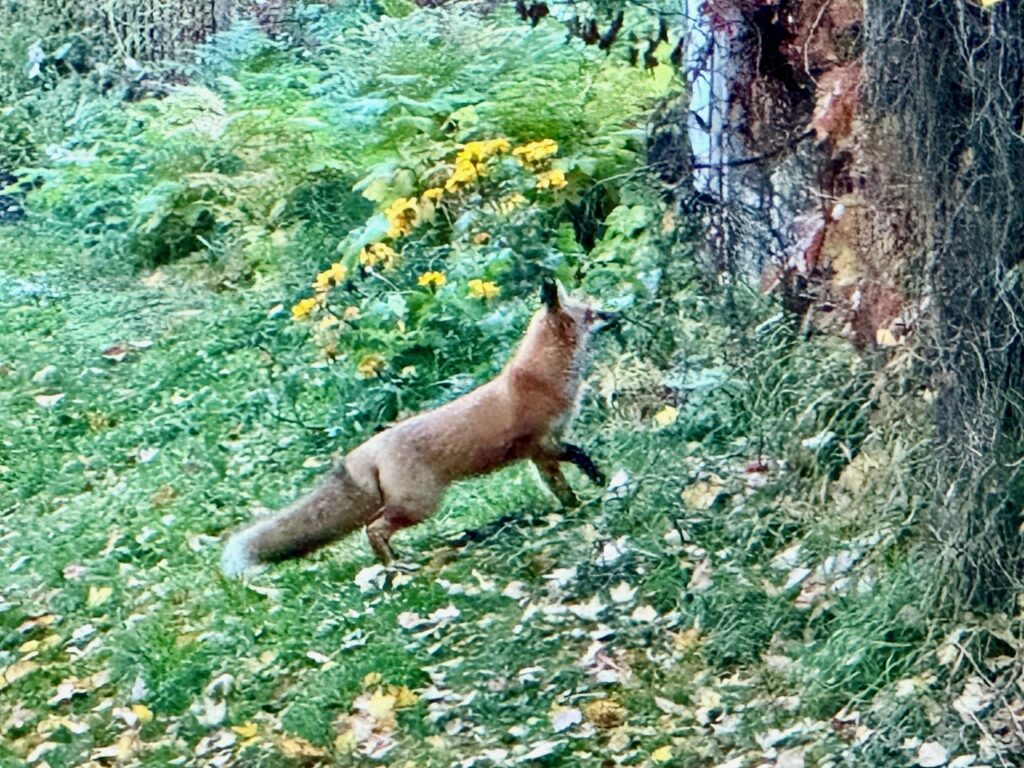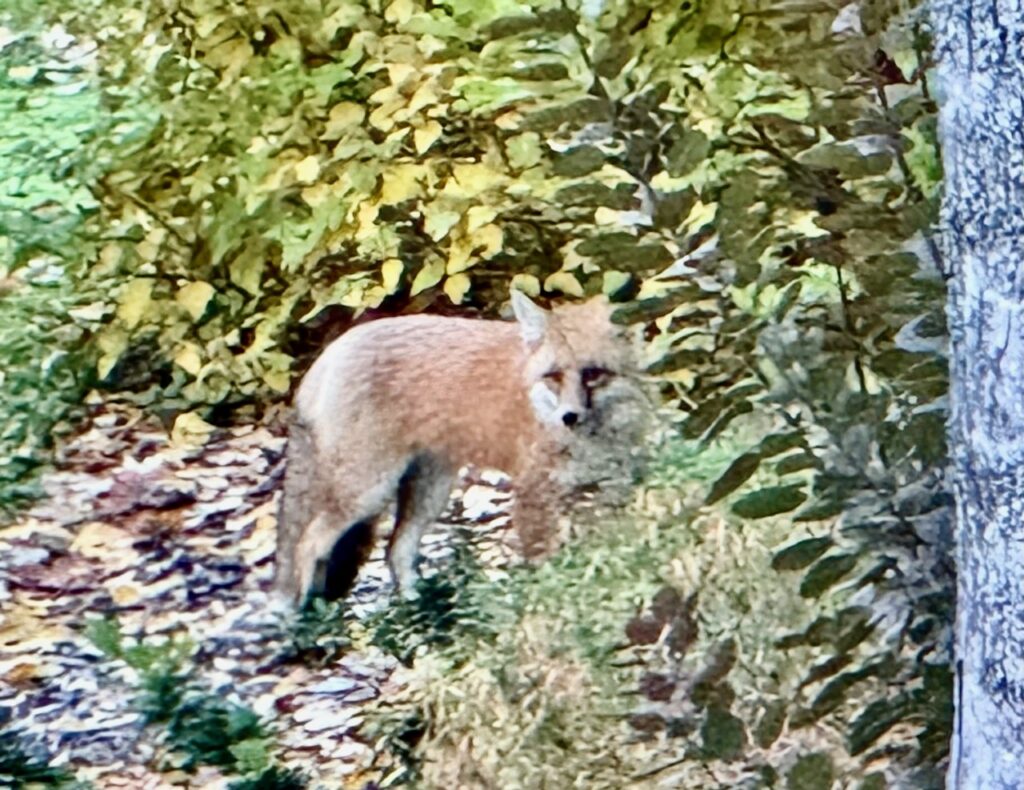
We had a delightful surprise last week while gazing out our front window during breakfast. I spotted what at first appeared to be a coyote next to the truck and then it moved to gaze at our chickens, and we realized it was a red fox. Over the 55 years I have lived here at Lee Creek, this was the first sighting of a fox, and it was magnificent, with its thick, bushy tail and vibrant light auburn fur. After realizing there was no way to snag a chicken through the wire fence, it soon wandered off, but hopefully it will return to feast on the ever-present rats that inhabit our chicken coop.

Now curious about red foxes, I contacted other long-time residents to find out just how rare a fox sighting is in the Shuswap. Our neighbour, Ken Smyth, is a local trapper who focuses on trapping primarily bobcats and martens. Since he arrived in 1998, he too has never seen a fox in the North Shuswap, although he has seen a few in the Adams Lake area, particularly one near Brennan Creek. Last year’s wildfire has devastated his trapline area and he is concerned that its impact on wildlife will persist for many decades.
The Bischoff family were some of the earliest settlers in the North Shuswap, so I contacted logger, rancher and hunter, Karl Bischoff, who has lived above Magna Bay his entire life. Years ago, he saw a few foxes on Crowfoot Mountain and has heard their strange bark at night, that sounds somewhat like the call of a female elk. Karl’s now deceased uncle Fred Bischoff had a trapline in the 60s and along with the martens and sables he usually trapped one fox a year. Recently, a neighbour also observed a fox up on Crowfoot Mtn., but none have been sighted near any of the nearby farms or ranches above the lake.
There are also reports of a few fox sightings in Silver Creek, Sunnybrae and Falkland. Yet, by and large, red fox are quite rare in the Shuswap, unlike other types of wildlife. Deer are more plentiful now than fifty years ago, especially with the very prolific white tail taking over the mule deer territory. Black bears are also common here and they are primarily interested in our fruit trees and bushes and rarely pose a threat to us. Cougars were here in larger numbers, but we lost many to hunters and perhaps to the wildfire as well. Coyotes were once common here but have not been seen in recent years. Prior to the fire, the number of skunks, squirrels and racoons were increasing but have since diminished.
According to a BC government furbearer fact sheet, red foxes are the most widely distributed carnivore in the world and adapt well to farmland and urban areas. Their ideal habitat is open ground with patches of forest, thus subalpine areas are prime fox territory in the north and ravines, parks and even golf courses in cities. Coyotes often displace or kill foxes; thus, the lack of coyotes here may be encouraging the foxes into this area. Foxes dine on birds and smaller mammals, including squirrels, hares, moles, muskrats, voles, and mice. They will also eat amphibians, reptiles, insects and even berries and other fruits, as well as small livestock.
Foxes mature in just 10 months and can live for up to 10 years. Their range varies from 40 km to up to 300 km and they can number up to one per square kilometre. Fox numbers fluctuate according to the numbers of prey, such as snowshoe hares that have populations which go up and down in cycles. The annual harvest of foxes in the province by trappers peaked in 1944 at 10,000 and since then it averages between 200 and 400.
Local wildlife biologist Jeremy Ayotte thinks the recent sightings of foxes in the Shuswap may be due to the increase in numbers of rats. Warmer winter temperatures are allowing rats to flourish here and the increase in their numbers may be a result of the profusion of shipping containers brought here that are used for storage and are prone to rodent infestations. So perhaps, we should be pleased to see more foxes with the hope they are consuming these rats.
POSTSCRIPT
After this article was published, Cynthia Bentley provided this video that she captured of a red wolf in her yard by Garland Road and Line 17 above Magna Bay in the North Shuswap in November, 2022:
Red fox are one of the 19 mammals that are trapped in B.C. and there are approximately 2,900 registered traplines. Most of the foxes are found in central and northern B.C., with just four percent trapped in the Thompson region, which includes the Shuswap. Here are two graphs that provide the details:


Learn more about red foxes from this government website: Red Fox Fur Management Guidelines






